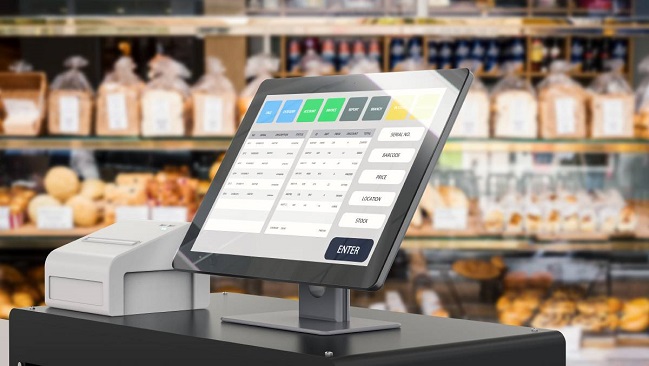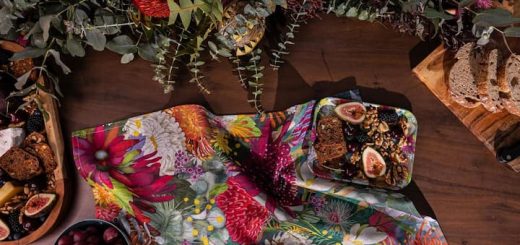Sharpen Your Skills: A Guide to Kitchen Essentials
The art of cooking isn’t just about following recipes; it’s about unlocking a world of flavour and creativity. Whether you’re a seasoned chef or a budding home cook, having the right tools at your disposal elevates the entire culinary experience. Imagine effortlessly slicing through vegetables with a keen knife, the satisfying sound echoing as you dice onions with precision.
Picture yourself confidently carving a roast chicken, the perfectly honed blade gliding through the meat with minimal effort. These moments of culinary prowess aren’t just about aesthetics; they contribute to a more enjoyable cooking process, allowing you to focus on the artistry of creating delicious meals. But before you embark on your culinary journey, it’s important to properly equip your kitchen with essential tools.
Just like a painter needs their brushes or a musician needs their instrument, a cook relies on a carefully curated set of tools to bring their culinary vision to life. Let’s delve into some essential kitchen tools, exploring their purpose and benefits, and how to care for them to ensure they become your trusted companions in the kitchen for years to come.
Building Your Culinary Arsenal: Essential Tools for Every Kitchen
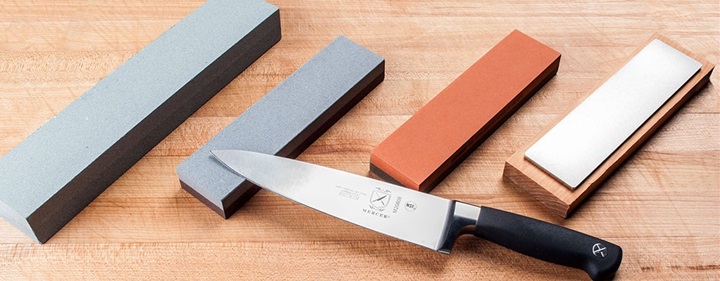
Equipping your kitchen with the right tools is the foundation for a successful and enjoyable culinary journey. These essential companions will transform you from a novice cook into a confident creator in the kitchen.
The Mighty Chef’s Knife: Considered the workhorse of the kitchen, a high-quality chef’s knife stands out as your most versatile tool. This multipurpose powerhouse tackles a wide range of tasks, from chopping vegetables to slicing meat with precision. Invest in a well-made knife with a comfortable handle that feels like an extension of your hand. Look for knives crafted from high-carbon stainless steel, offering the perfect balance of durability and sharpness.
Hone Your Skills (Literally): While a gleaming chef’s knife might be the centrepiece of your culinary arsenal, its true potential lies in its edge. A dull knife is not only frustrating to use, requiring excessive force and potentially leading to uneven cuts, but it can also be dangerous. This is where the effective knife sharpening stone steps into the spotlight. This seemingly simple tool unlocks a world of precision and control in the kitchen, transforming a dull blade into an instrument capable of elevating your culinary experience.
The benefits of using a sharpening stone are multifaceted. First and foremost, it restores the cutting edge of your knife to its optimal sharpness. Imagine effortlessly gliding through vegetables with minimal resistance, or confidently carving meat with clean, precise cuts. This newfound sharpness translates to better control and cleaner cuts, enhancing your food presentation and overall cooking efficiency.
Sharpening with a knife sharpening stone also extends the lifespan of your knives. A dull knife requires more force to use, which can lead to premature wear and tear on the blade. Regular sharpening maintains the integrity of the blade, ensuring your investment lasts for years to come. Furthermore, the sharpening process itself can be a meditative and rewarding experience.
The rhythmic strokes of the knife across the stone become a form of mindfulness, fostering a deeper connection with your tools and the act of cooking itself. The world of sharpening stones isn’t a one-size-fits-all proposition. There are various types of stones available, each with a different level of grit. Coarser stones, typically identified by a lower grit number are ideal for repairing severely dull blades or significantly altering the cutting angle.
These stones remove a significant amount of metal, so they should be used with caution. Finer stones, with higher grit numbers are used for honing and polishing a previously sharpened edge. These stones refine the existing edge to a razor-sharpness, ensuring optimal cutting performance. Learning to sharpen your knives on a stone takes time and practice. There are various techniques and sharpening angles to master, and achieving a perfectly honed edge requires patience and a steady hand.
Protecting Your Countertop and Your Knives: Cutting Boards
A quality cutting board serves a dual purpose: safeguarding your countertops from nicks and scratches while keeping your knives sharp. Choose a cutting board made from a durable material like wood or bamboo, which is gentler on your blades compared to glass or plastic. Having multiple cutting boards designated for different purposes (one for raw meat and another for vegetables) helps prevent cross-contamination, ensuring food safety in the kitchen.
The Simmering Symphony: Pots and Pans
No kitchen is complete without a basic set of pots and pans. Invest in a variety of sizes to accommodate different cooking needs. Stainless steel is a popular choice for its durability and versatility, but don’t hesitate to explore other options like cast iron skillets, known for their excellent heat retention, perfect for searing meat or baking delicious cornbread. For healthy and convenient vegetable steaming, consider a pot with a steamer insert, a handy tool for incorporating more vegetables into your meals.
The Mixing Masters: Mixing Bowls
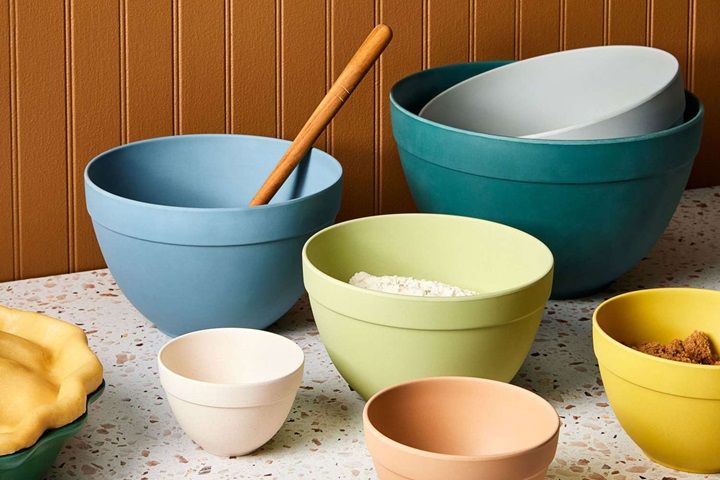
From whisking eggs to combining salad ingredients, mixing bowls are essential for countless kitchen tasks. Stainless steel and glass bowls offer both durability and easy cleaning. Choose a variety of sizes to handle different mixing needs, from small bowls for whisking sauces to large bowls for tossing salads or mixing dough.
The Whisking Wonders and Measurement Mavens
Whisks and spoons come in various shapes and sizes, each suited for a specific task. A balloon whisk is ideal for whipping cream or creating airy batters, while a flat whisk tackles mixing sauces and gravies with ease. A sturdy mixing spoon is a must-have for stirring ingredients and scraping down the sides of bowls. Accurate measurement is crucial for successful baking and cooking, so invest in a set of measuring cups and spoons made from durable materials like stainless steel. Consider a set with both wet and dry measuring cups for added versatility.
The Sizzling Specialists: Tongs and Spatulas
Tongs and spatulas are essential for flipping food while cooking. Look for utensils made from heat-resistant materials like silicone or metal. Tongs are perfect for flipping burgers or turning delicate fish fillets, while spatulas help with tasks like scraping up browned bits from the bottom of the pan or flipping pancakes with ease. With these essential tools in your culinary arsenal, you’ll be well on your way to mastering the kitchen and creating delicious meals that impress yourself and your loved ones.
Caring for Your Culinary Companions: Ensuring Tool Longevity
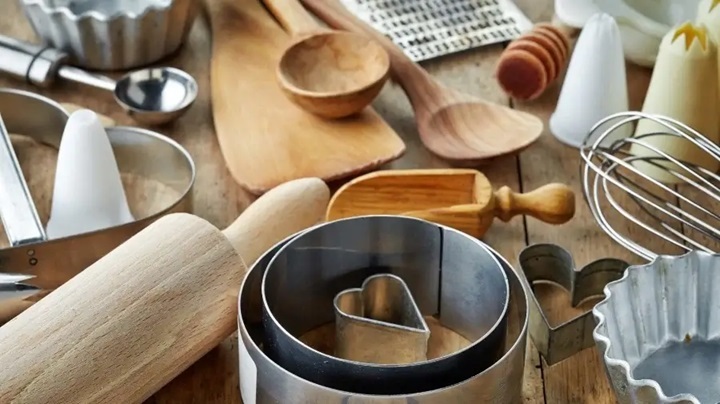
Just like any valuable tools, your kitchen essentials deserve proper care to ensure they remain reliable companions for years to come. Here are some tips for maintaining your kitchen tools:
- Wash your knives by hand: Dishwashers can be harsh on knives, dulling the blades and potentially damaging the handles. Wash your knives with warm water and a mild dish soap after each use. Dry them thoroughly with a clean dish towel before storing them.
- Store your knives properly: Don’t toss your knives haphazardly into a drawer. Invest in a knife block or magnetic knife strip to store your knives safely and securely. This prevents them from bumping against each other or other utensils, which can dull the blades.
- Sharpen your knives regularly: The frequency of sharpening will depend on how often you use your knives and the type of food you typically cut. A good rule of thumb is to sharpen your knives with the knife sharpener stone every few months, or whenever you notice a decrease in their cutting performance.
- Learn how to use honing steel: A honing steel realigns the edge of your knife without actually removing any metal. Regular honing between sharpening helps maintain the edge and extend the time between full sharpening sessions. Hold the honing steel vertically on a stable surface and draw the blade of your knife down the steel at a 15-20 degree angle, applying gentle pressure. Repeat on both sides of the blade several times.
- Clean and maintain your other tools: Wash your pots, pans, cutting boards, and other kitchen tools with warm water and dish soap. For stubborn stains, you can soak them in a baking soda solution or use a natural cleaning product. Dry your tools thoroughly before storing them to prevent rust or mildew. Oil wooden cutting boards occasionally to preserve the wood and prevent cracking.
By following these simple tips, you can ensure your kitchen essentials remain in top condition for years to come. Remember, well-maintained tools not only make cooking more enjoyable but also contribute to a safer and more efficient kitchen environment. So, invest in quality tools, treat them with care, and watch your culinary skills flourish!


